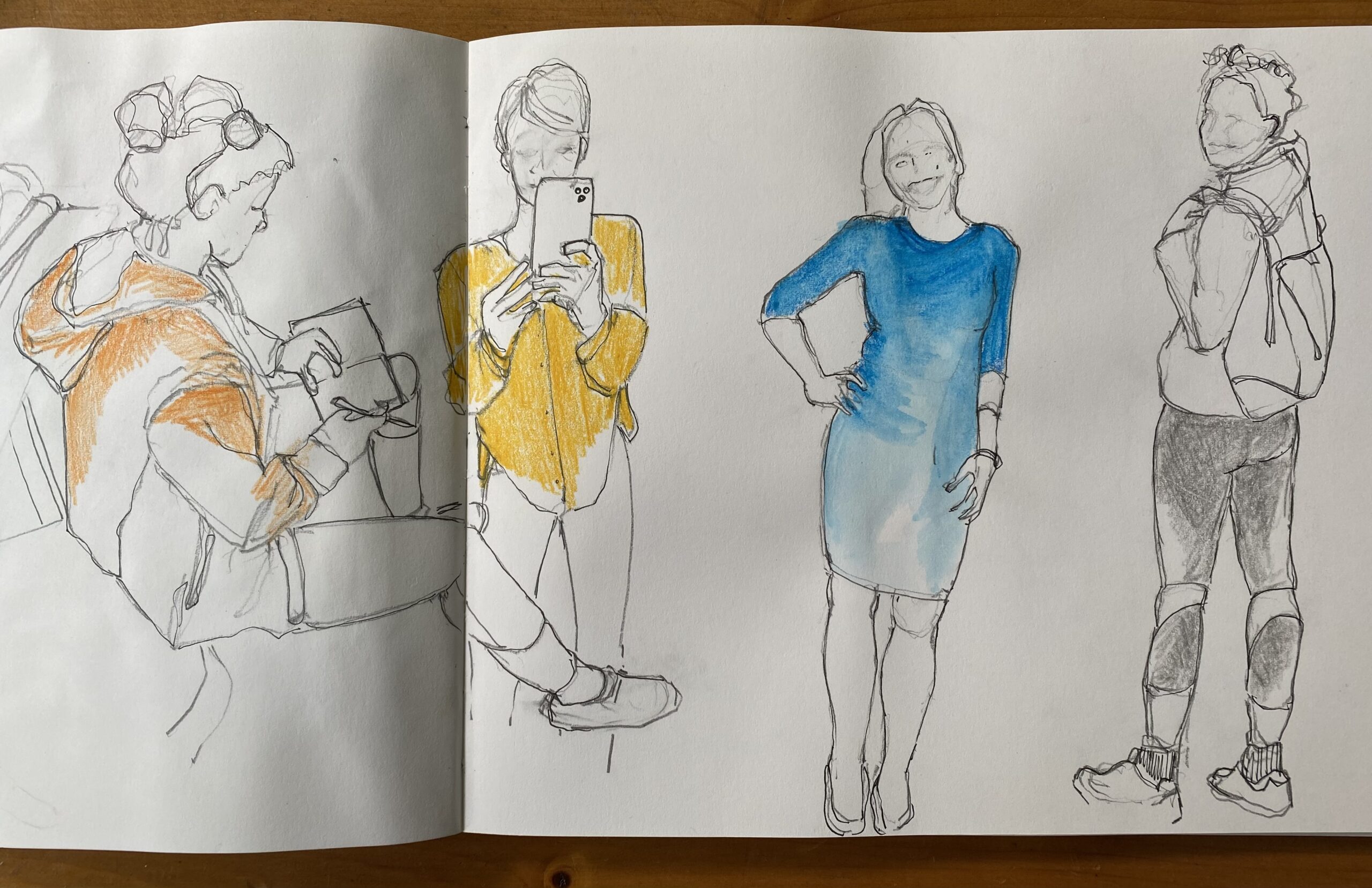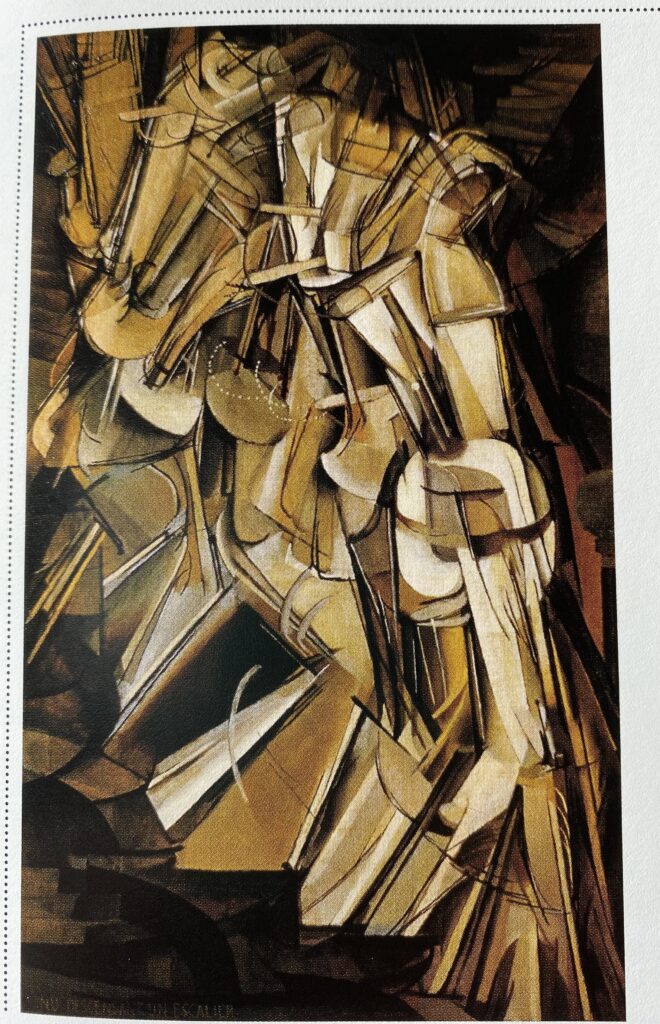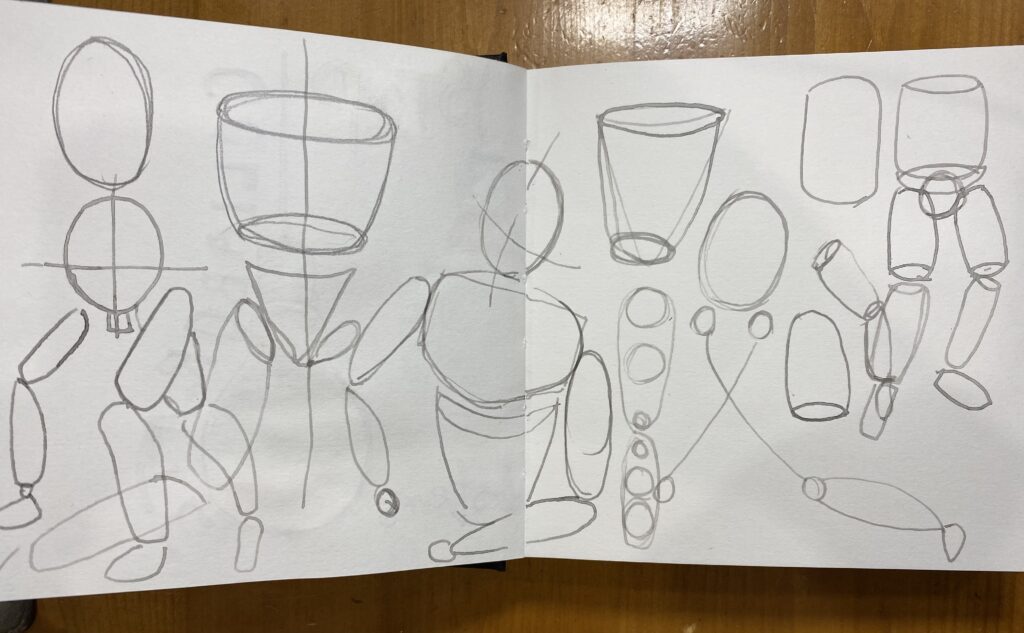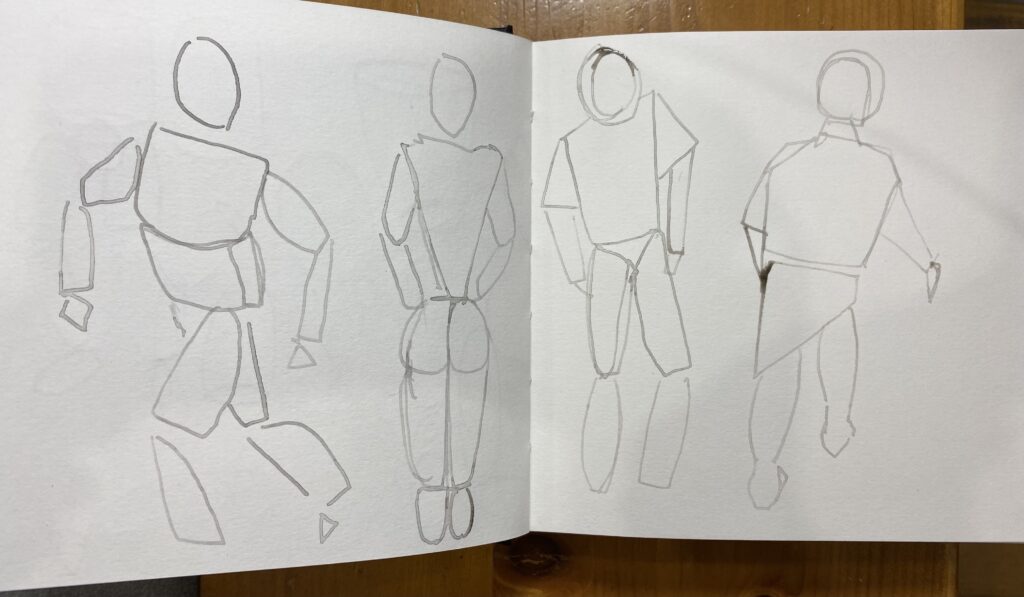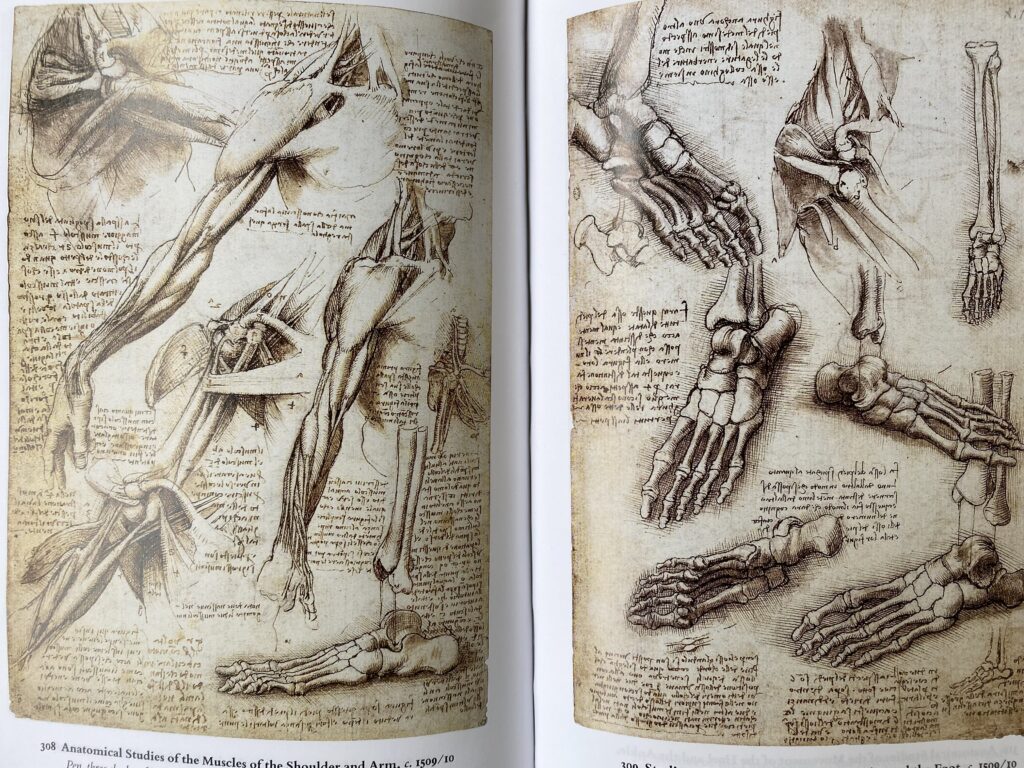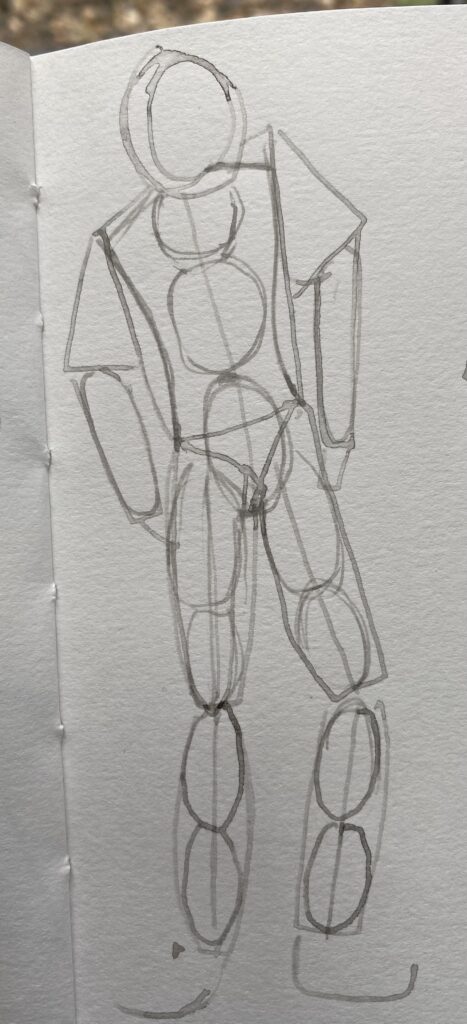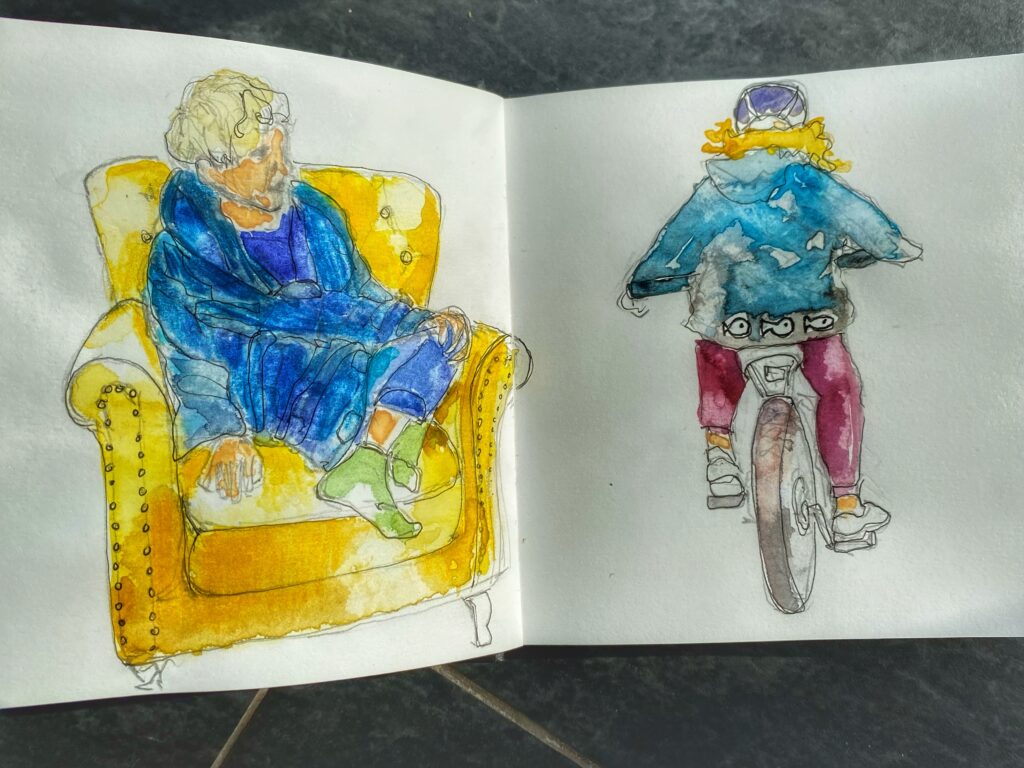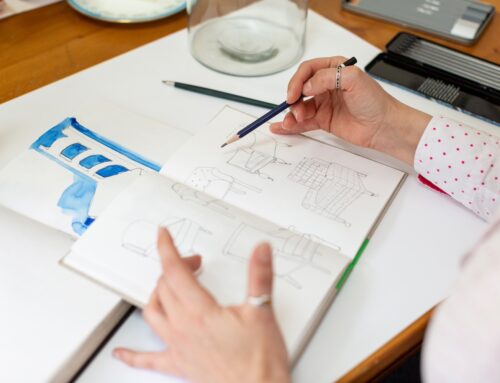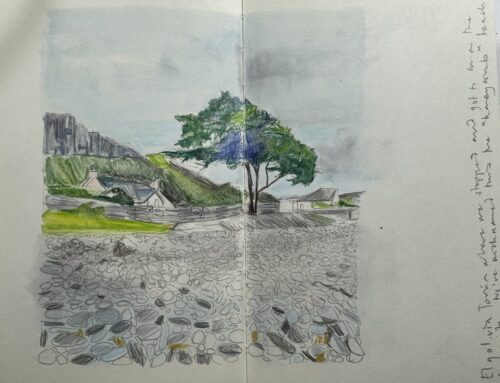How to Draw a Human Figure?
It’s my nemesis to be honest. An ambition of mine is to be able to sketch human figures quickly in my sketchbook as I do with everything else.
With this thought in mind, I’m challenging myself (as well as you!) to break down the process of drawing a human figure. I want to understand what techniques and tools I need to adopt to be able to develop my own style in order to understand this challenging subject area.
I draw great comfort that I fall in line with the great artists over the centuries who have also struggled with this area of drawing. Van Gogh, for example, began his prolific art career drawing figures in static poses. During the first two years of his career he spent ALL of it mastering drawing. He struggled with problems of proportion as you can see from the drawing on the left below.
The head is drawn overly large as are the shoes and hands (a problem I affiliate with). Compare this earlier sketching rendition of the carpenter on the left (Carpenter, 1880. Rijksmuseum Kroller-Muller, Otterlo) with a sketch, two years later of an old man sitting in a chair (Old Man Reading 1882, Van Gogh Museum, Amsterdam) where he’d clearly mastered his proportion problems. It took him two years of practice! Perhaps, herein lies the first lesson to take forward on consistently practising. (I love uncovering the stories of the great artists by the way as it teaches us so much about the journey they undertook to get to the famous artworks we come to know, love and respect.)
Table of Contents
Why is drawing the human figure so difficult?
Drawing the human figure, in theory, should not be any less challenging than drawing anything else. All drawing is based on proportion. Landscapes, sketching objects or a still life, buildings and street scenes and humans! Drawing humans depends heavily on correct proportions – more so perhaps than other drawings.
For example, ever found human heads challenging to draw?! I do! Its baffling why this is so. In answer to why this is, we over emphasise the features, not the foreheads and hair because that is where our day to day focus lies when interacting with one another. We have to re-train our brains to understand the science of proportion in an un-emotive way. That is why you will often see me sketching the head last in my drawings! I need the rest of the body to gauge the size of the head.
So the first lesson for the beginner getting started drawing the human figure, has got to be a focus on simple shapes and then on proportion. The American artist, Burne Hogarth stated that
“There are three kinds of forms in the human figure: Ovoid forms – egg, ball and barrel masses; Column forms – cylinder, cone; Spatulate forms – box, slab and wedge blocks.” So true!
I will be exploring how to use simple shapes to get started and then use them to build an understanding of proportion.
My Guide on How to Draw A Human Figure In Three Simple Steps
The Stick Man
I am going to show you have to combine everything from scratch starting with the stick man I referenced from the onset of this post!
Really?
Yes. Believe it or not stick men and drawing them form an important part of learning how to draw the human figure. Especially if you are a beginner.
In 1912 the art world was outraged by a painting called “Nude Descending a Staircase” by a surrealist artist called Marcel DuChamp. I remember seeing this painting at the age of 19 and being equally affronted that something that looked like multiple cardboard men had become such a sensation, especially having come from studying the Renaissance painters and Masters on human shape and form. His semi abstract nude, however, had an extraordinary sense of movement. Duchamp shifted attention from art work per se and managed to capture the ideas that lay behind them. We can still tell that this is a human form and shape.
Why include this painting in this article and what does it have to do with stick men and drawing the human figure? To me this painting symbolises not only deconstructing the human anatomy but also stripping it right back to basic shapes. It is not particularly transcribed in an accurate way. The genius result, however, is that the nude descending is still recognisable as a human form.
The stick man for me is as basic as you can get. Everyone can draw a stick man and it is usually the most popular comment I hear “I can just about draw a stick man.”
Let’s start there then.
I’m going to show you how I use the stick man as my starting point and then build a representational human in the below video.
How to Build Your Stick man!
One of the first things I have noticed about drawing stick men is that you quickly define what type of human drawing you could finally produce. You could be representational with your stick man or more cartoon like. I seem to veer between the two in my sketchbooks. I like to get as close to accurate as I can and enjoy deconstructing an image in order to capture it.
If you feel artist’s block coming on from the thought of this idea, or you are a total beginner new to all of this, then pull out a magazine and draw the stick man shape you see on the page with a marker pen over a human figure. I show you how to do this in my online Sketch from Scratch course.
The important thing to note about drawing the human figure is you need to find ways to de-mystify it. Everyone develops a different approach and I’m sharing mine. In the video accompanying this article I run through a very basic 3 step approach. Take a human image. Use a photograph or magazine and then, looking at the picture visualise how you would draw a simple stick man shape to represent the drawing.
Start with a simple stick man as I have done
Try and give them something to do. Mine is getting into the water to swim. If you have more time, practice lots and lots of stick men drawings on the page. Doodle them on a page. Keep it simple. Play with them on a page over and over again. Draw a page of different stick men in different poses. Seriously. When I first started I would find my children’s comic books and bedtime stories and trace over the characters in them into stick man shapes. I was fascinated by the movement and shape and oddity of my stickmen. Importantly, however, it gave me a sense of movement and also short-circuited worrying about foreshortening or perspective. Major challenges we all face when drawing human beings.
“Fleshing” out your sketch
Remembering the points I made earlier on in this post, now start to fill out your stick man using shapes and blocks, remembering to add curves for the limbs and basic filled out shapes. Don’t worry that you are scribbling on or around the actual initial stick man. This exercise is all about getting you used to building layers around the stick man shape. Again as you familiarise yourself with step 2 of this process take some time simply quickly sketching shapes and form on a page. You may find that by the end of an exercise like this one you abandon needing to draw a stick man to help you.
Practice Mark Making
For those of you that have followed me for a while you will have seen me advocate mark making as part of your regular sketchbook habit.
Following on from the stick man phase, I have filled a page, as Burne Hogarth advocates, with spheres, triangles, circles and lines to practice.
Fill a page with shapes
Have a go simply filling a few pages with a variety of shapes. On a new page, then have a go putting some of these shapes together into a human body likeness as I have done below. Use reference photos of people. Practice drawing cylinders to support you start thinking in a 3D way. I’ve used baby squares for hands and triangles or rectangles for legs. You could even trace over magazine pictures with a marker pen to get a feel for proportion and shape.
Building Shape and Proportion
Just to encourage you that employing this methodology works, here is a run through of a page of figures I have drawn as a time lapse. (You can see me rubbing out my second head drawing – which is something I am still practising to get right.) Notice how I draw the figures employing refined rectangles and shapes. I always find it helpful seeing the shapes in the drawing. I even employ this technique despite the challenge of foreshortening and perspective of the figure sitting on the rock.
Just look beyond your literal understanding of the scene – i.e girl sitting on rock, and simply look at the size and spacing of the shapes.
When stuck always think first about the shapes that you see. My confidence has grown out of the practice I have put in drawing humans in blocks of shapes! My brain then automatically identifies the shapes visually.
I would recommend setting aside a double page of your sketchbook and having a go sketching multiple figures. Perhaps the same person but from different angles or a mix of figures. I’ve filled an entire sketchbook full of figure drawing practice which I share in my online “Sketch from Scratch” course, drawing people which you can access here!
Refining your sketch further
What started off as a stick man may now look to be a fleshed out drawing with shape and tone. Think about the context of the environment in which your figure sits. Are they clothed, are they wearing something bright or colourful, are they sitting or doing something specific? Build the layer. I’ve kept mine simple in her swim suit. Don’t be afraid to use lots of lines and marks on the paper to support you build shape, you can always rub these out later!
As you become adept at sketching the human figure understanding the anatomy that lies beneath it will become of more interest and your drawing will become more selective. Thank goodness that Leonardo did all the heavy lifting for us when it came to anatomical studies. His anatomical studies of muscles and arms is only the start of an extensive fascination of dissecting the human body on paper. As you become more familiar with the human body your drawing practice will become easier and more fluid so as you draw make sure you really pay attention and look at the anatomy in front of you. Life drawing is an excellent activity to support you develop this knowledge! You will instinctively be able to head to drawing directly on the paper in your own style as you get to know the subject material better.
Believe it or not basic stick men can get you started on complicated human poses too. When you get stuck just imagine the stick man pose and build your drawing from there. You can draw lines at a slant to describe tilts of shoulders or limbs for example. This too can help you work out foreshortening and perspective by drawing lines relative to a pose.
As a sketch artist, you don’t necessarily need masses of detail to hint at a person in a sketch. A basic skeletal frame in the shape of a stick man can sometimes be all that is necessary for the brain to work out that it is a human in an environment. The human figures you may draw can simply be blocks on a page with left out details but hinted at by their clothes or gestures. This is excellent to use when you want to portray people at a distance or figures in groups for example.
I explore all of this in my online sketch course taking you from a stick man to a human figure in 3 simple steps. Check it out here if you are interested in learning how to start drawing the human figure. The course includes an hour tutorial as well as supporting pdfs to get you started.
Draw quickly and almost don’t think about it!
As a sketchbook artist I have learned to draw quickly. I’m a big fan of getting as much as possible down on paper. Any technique to help me do this is welcomed. When it comes to the human figure there are a few rules that are helpful.
Use a way to measure the body. For example, the adult body consists of eight “head sizes” in length. Break down your shape sketching further by filling in detail with further shapes. Like this.
Of course you won’t go around drawing like this in reality but this is the basic first step to get you thinking about proportions. Like Van Gogh you will then need to practice. The other benefit of this technique is that it gives you enough room on the page.
How many of us have started to draw and realise that we run out of room to complete a full figure? Most frustrating! When starting to draw try to learn to tackle the human figure in the whole. You will then naturally be able to gauge sizing and shaping as you become more experienced. You could even start by simply drawing a stick man on the page to ensure you get everything down. (You can see I have sketched in my stick man lines above. They help anchor the drawing further.) This leads neatly onto my second lesson area of using an environment or setting to help you build your confidence drawing the human figure.
The human figure in a setting or an environment
If you have ever flipped through my very early sketchbooks you will see that there are practically NO humans and lots of objects. This is rightly the place to start if you are a sketchbook beginner for lots of reasons. The thought of drawing a human let alone capturing the likeness was always a daunting one. To break this down I started to explore how I could add people into my sketching. I have included a 7 minute video as part of this section talking you through my personal progress and confidence building when it has come to drawing the human figure. I have gradually built human figure sketching into the environments of my sketchbook and you can too!
Why is using a setting a good place to start for drawing a human figure?
- You keep your drawing momentum going. A sketchbook page can have many things going on within it.
- You take the pressure of yourself to capture a perfect human character on the page.
- Drawing the environment within which the figure moves, sits, or interacts with, supports you tell the story without needing to focus too much on the accurate detail of a human figure. The brain picks up the clues from the narrative references of your picture! The dinner plate in front of the little girl in the video is a simple circle line with fork drawn in less than a minute but immediately referencing where the subjects are.
- You build your experience. As you can see from the first sketch I talk about in the video, I begin with shapes and proportions and then by the end have evolved into exploring human figures more confidently.
- You can use the environment to support you gauge the proportion and dynamics of your figure.
- You develop a distinctive figure drawing style that compliments everything else that you draw.
So taking our basic knowledge of drawing shapes and proportions on a page here are my guidance notes on how to evolve your people drawing skills within different environments.
Start small and simple to begin with
I love how placing a person in an environment brings added credibility to your drawing! These two sketches depicting a Saturday morning were done in my small sketchbook. Watching TV and going for a bike ride. The yellow chair and bicycle help me anchor my figures. Forget for a moment that the sketches themselves may feel or seem advanced. It helps to look for abstract shapes, the angles and curves and aspects of the person and objects surrounding them that help you get them down on paper. I used the clothes (folds of lumpy dressing gown) and angular shapes of the bicycle to help me in these two sketches but also broke down the shapes I could see. Remember too that a good place to start when sketching people is with friends and family as you are more likely to be comfortable with them. The small sketchbook format can support you draw faster than a larger piece of paper.
Use your sketchbook format to practice looking
Observation and practice is key. An exercise I run through on my Sketch from Scratch People course is a page full of human characters in different poses but drawn in the space of 30 seconds to a minute per person on the page. A sketchbook page is the best place for this type of exercise. This may very well start with stick men, which is not a bad place to start. I envy a good stick man!
Look as much as you possibly can, as this will support your brain develop your hand to memory skill. Imagine the stick man as the skeleton of the figure you are drawing. Remember the earlier action point when it comes to stick man drawing.
Don’t worry about any specific details. Now take that stick man principle and sketch around it whilst placing it within an environment. I know it may not seem like it but the below sketch of cartwheels was built on this premise. Even the trees are a bit stick man. Look how simple the environment was to create around the figure. A horizon line and brush strokes for trees with a splash of green colour.
Sketch the same person in different poses!
Moving on from the little girl cartwheeling, I also stop to discuss drawing the same person in different poses in my video. I think that this is a great technique to employ because people never stay still! At the start of live people sketching I’d get frustrated that I couldn’t capture people quick enough so had to think how I could convey this on a page.
Taking a double page spread of your sketchbook split it into 3 sections and use the occasion to practice! A couple of things you can focus on to support you.
a) If the figure is moving, loosen up your style. Your lines should be loose and applied relatively quickly. (Remember the stick men exercise of between 30 seconds to 1 minute? This feeds into your experience of sketching quickly.) You may opt for ink as you grow in confidence which is a great medium for conveying movement. I particular love how the artist @suhitasketch achieves fluidity in her human sketching using ink and bright colour. I also use paint too, a light wash that flows with the shape of the person sketched to emphasise movement. Sketches will appear more dynamic, even if the subject is only playing Lego or watching TV. Simple poses can often be the most impactful.
b)Pay attention to the fold of the clothes. Observing where they fold or hang can make a big difference to the dynamic of a picture. Zig zags imply creasing or bends of a body. Skirts or dresses are more complex. Different textures ranging from wool through to cotton may enable you to use different types of pencil stroke. You may also want to use the way light falls across figures to help you (as I have done in the sketch of the two children in chairs!) Keep it simple.
c) Practice movement by changing the gestures for the sketches. Arm angles may change. The head may turn to different sides. Try and portray them in different poses to convey movement.
But most of all practice whenever and however you can.
My one piece of advice is that you may as well as enjoy it and build the human figure into the anatomy of your daily sketching. Get used to going through a process that helps you uncover your style even if its a bumpy journey to get there finding it.
“Every portrait that is painted with feeling is a portrait of the artist, not of the sitter. The sitter is merely the accident, the occasion. It is not he who is revealed by the painter; it is rather the painter who, on the coloured canvas, reveals himself.” The Picture of Dorian Grey. Oscar Wilde
How right Oscar Wilde is. We can all aim to become perfectionists when sketching the human figure but its way more fun putting our individual interpretation on the people we depict.
If you’d like to master your technique further why not join me in my learning community and explore Sketching the Human Figure from Scratch in my online course. I go into greater depth. Click to access How to Draw the Human Figure.


